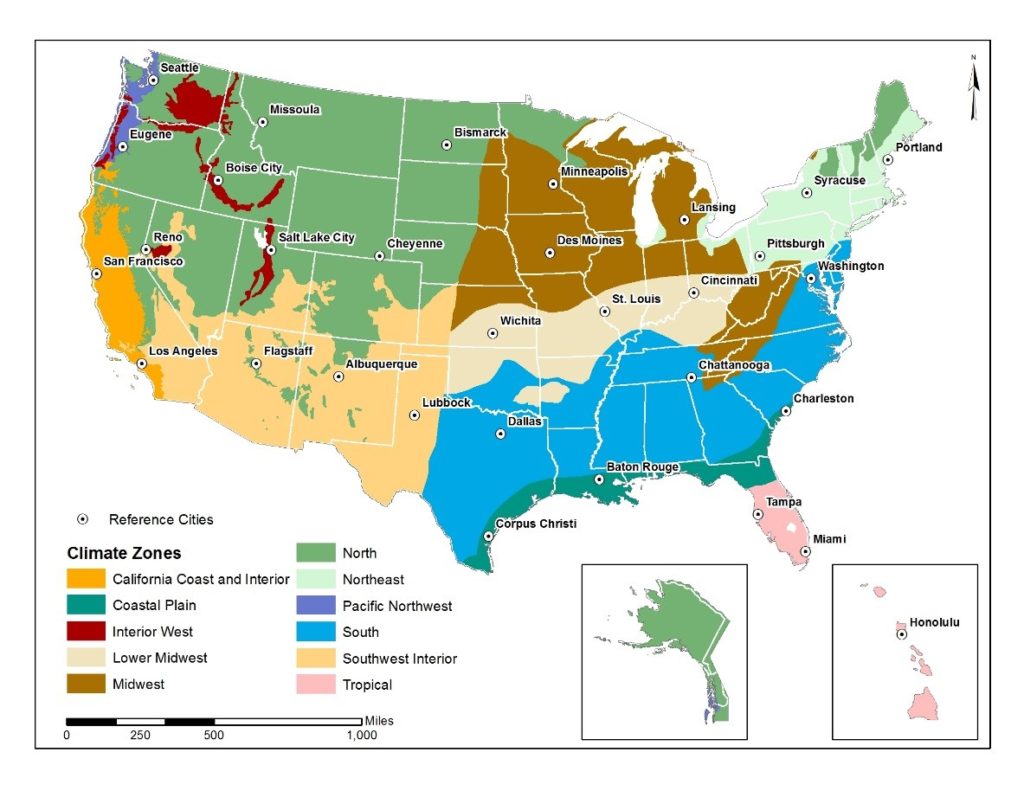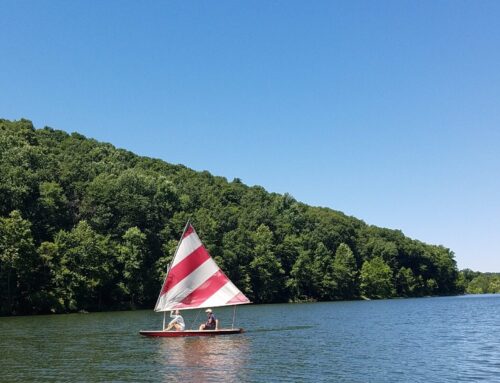The use of trees as a stormwater best management practice (BMP) has been limited by the uncertainty of how to “credit” trees for runoff and pollutant reduction to meet water quality requirements. In 2014, the Center for Watershed Protection (the Center) began a study to address this gap by developing a science-based crediting system for urban tree planting. The project was funded through a grant from the U.S. Forest Service’s National Urban and Community Forestry Advisory Council.
As a first step, the Center reviewed 159 publications to help answer the question “What is the effectiveness of urban tree planting for reducing runoff, nutrients and sediment?” Our literature review found that only a limited number of studies directly address the water quality benefits of urban trees, and the available studies are highly variable in their methods, scale, and results given the numerous processes involved (Figure 1) and factors that affect them (e.g., tree characteristics, storm event characteristics, meteorological factors). As a result, the project team developed a water balance model to provide an improved method for quantifying the stormwater benefits of urban tree canopy. An early version of this model was used by the Chesapeake Bay Program in their Urban Tree Canopy Expansion BMP crediting protocol adopted in 2016.
Click here to download the literature review.
Figure 1. The Influence of Tree Canopy on Runoff and Water Quality
The water balance model estimates the mean annual runoff for a single tree at maturity planted over grass or impervious cover, compared to runoff from those same sites without trees. The model was run for the four hydrologic soil groups (HSG) for five tree types at 31 locations in 11 climate zones (Figure 2). Metrics from i-Tree Forecast were used to parameterize the water balance model. The model was reviewed by researchers and practitioners with expertise in stormwater modeling, forestry, engineering, or hydrology and accounts for the effects of tree canopy on rainfall interception, evapotranspiration and infiltration. Documentation is provided in Hynicka and Caraco (2017).
Click here to download the water balance model documentation.
Figure 2. Climate Zones for Crediting Framework (modified from McPherson 2010)
The Center used the water balance model results to develop two tree planting credits (Table 1). Both credits apply to trees planted in the urban environment, except for planted riparian buffers, large-scale reforestation projects, and trees planted in engineered soils (such as bioretention or structural soils).
| Table 1. Summary of Tree Planting Credits Developed from the Water Balance Model Results | ||
| Characteristic | Pollutant Load Reduction Credit | Stormwater Performance-Based Credit |
| Use of Credit | · Compliance with nutrient and sediment TMDLs | · Compliance with site-based stormwater management requirements (volume-based and pollutant-based) |
| Required Inputs | · Climate region · Number of trees planted |
· Nearest city (from drop-down list) · Tree type · Surface over which the tree will be planted · Number of trees planted · A breakdown of HSG soil type/land cover combinations for the entire site · The design storm, in inches |
| Optional Inputs (default values are provided) | · Tree type · Soil type · Surface over which the tree will be planted · TN, TP and TSS event mean concentrations |
· Tree size (DBH) · Tree canopy area · TN, TP and TSS event mean concentrations |
| Outputs | · Annual reduction in TN, TP and TSS loads (lbs/yr) for an individual tree and for a tree planting scenario | · Runoff (cubic feet), TN (lbs), TP (lbs) and TSS (lbs) reduction for user-defined tree planting scenario for a specific storm event (e.g., design storm) |
| Key Assumptions* | · TP and TSS load reductions are directly proportional to runoff reduction · TN load reductions are 65% of runoff reduction to account for soluble forms of nitrogen reaching a stream or other waterbody through infiltration and leaching |
· The amount of runoff reduction achieved by tree planting is not uniform across all storm events · The annual runoff reduction from the water balance model is translated to an event-based reduction using a unit runoff reduction value |
| TMDL = total maximum daily load TN = total nitrogen TP = total phosphorus TSS = total suspended sediment DBH = diameter at breast height* Refer to the water balance model documentation for more detailed model assumptions |
||
The resulting credit values represent trees at maturity in “healthy’ condition; however, the credit is conservative in that it does not account for water losses via leachate. Agencies adopting this crediting framework may wish to specify minimum qualifying conditions (e.g., minimum soil volume per tree, requirement to have a maintenance plan in place) to obtain the full credit, and offer a reduced credit (70% of the optimal credit) where these conditions are not met. Another option is a credit release schedule where the full credit is provided over a specified period of years pending verification. As part of the crediting framework, a set of Design Specifications for Urban Tree Planting is provided that outline best practices for design, preparation, planting, and maintenance of urban tree planting projects. These specifications can be incorporated as guidance by regulatory agencies adopting these credits to help ensure that trees planted can reach their full growth potential.
Click here to download the Design Specifications for Urban Tree Planting.
Each credit includes a short overview of how it can be applied, and also includes a spreadsheet tool for use in calculating the credit for a specific planting scenario. Links to download the credit materials are provided below.
Pollutant Load Reduction Credit:
· Pollutant Load Reduction Credit Overview
· Pollutant Load Reduction Credit Tool
Stormwater Performance-Based Credit:
· Stormwater Performance-Based Credit Overview
· Stormwater Performance-Based Credit Calculator
· Stormwater Performance-Based Credit Documentation
These credits provide regulators and stormwater practitioners a means to better integrate and account for the effect of trees for stormwater regulatory compliance. The water balance model provides results for all regions of the U.S., so that the crediting framework can be implemented in any state or locality. For more information about this project, contact Karen Cappiella (kc@cwp.org) or Neely Law (nll@cwp.org).








